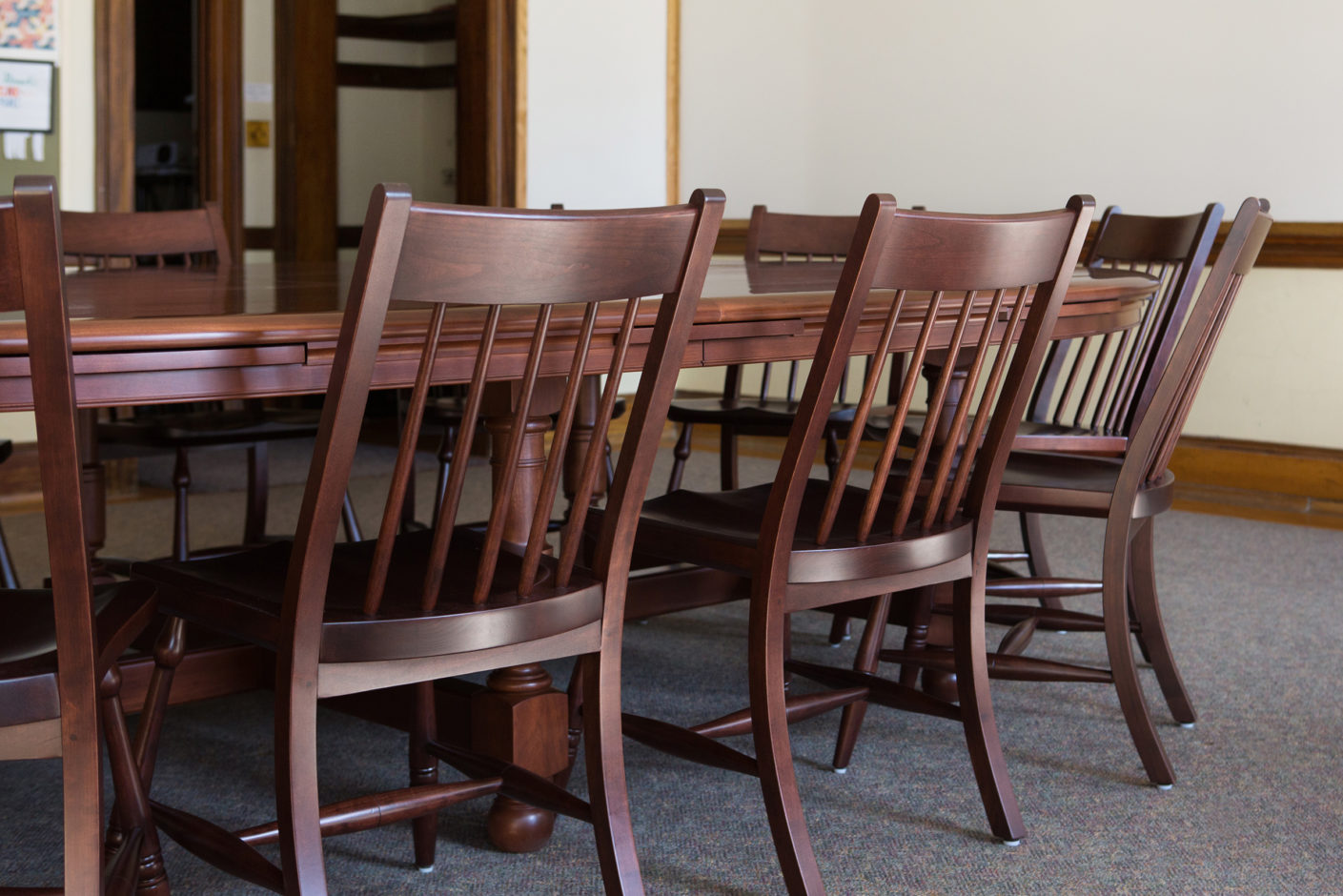We are thrilled to announce our exclusive working partnership with Phillips Exeter Academy and share that Huston & Company is now the sole builder and provider of the original, patented Harkness Table™.
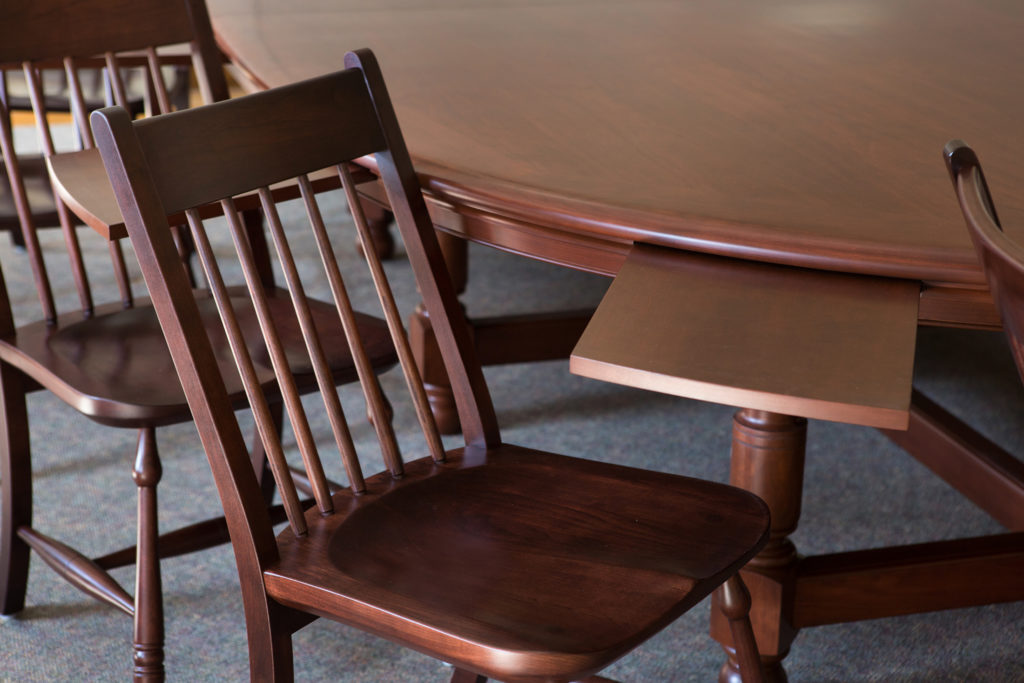
What is the Harkness Table™?
Originally developed in 1930 by philanthropist Edward Harkness for Phillips Exeter Academy, the signature Harkness Table™ encourages a collaborative style of learning and discussion through its oval form. This type of learning and engagement was inspired by the Socratic method and is known in many classrooms today as the Harkness Learning Method.
In engaging with their classmates around a signature Harkness Table™, students are encouraged to listen to the ideas and thoughts of their peers and in turn, they develop the ability to articulate their own opinions.
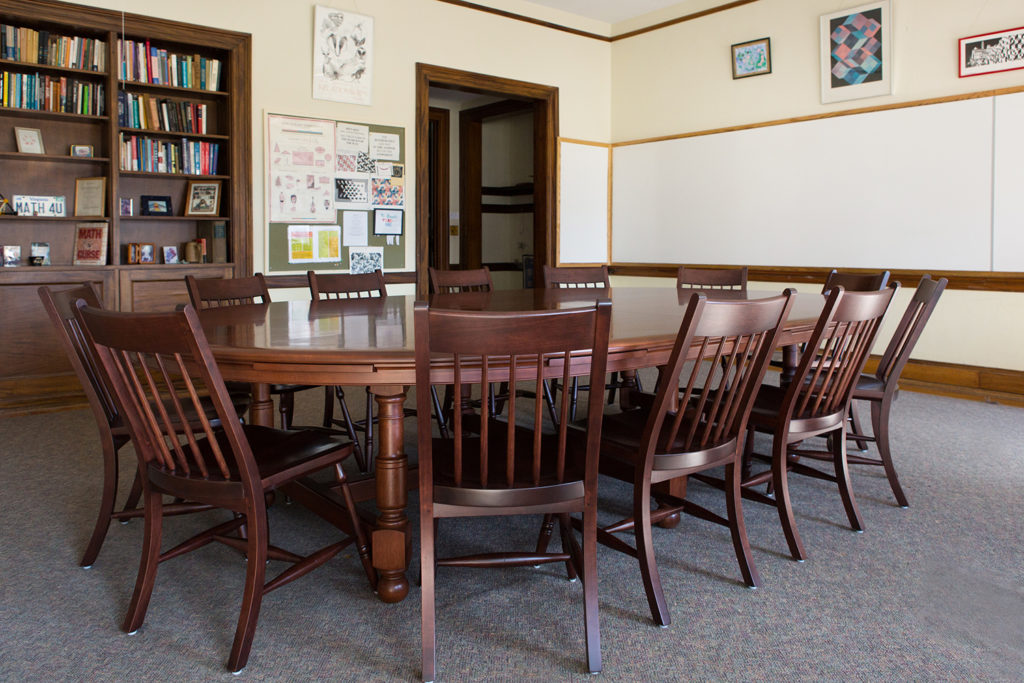
Harkness Table® Details
The Huston & Company Harkness Tables™ are built according to the original 90-year old copyrighted and patented design. The standard size of the traditional oval Harkness Table is 7’ wide and 11’ long, seating twelve students and one teacher, with longer versions available for more students.
While many of the Harkness Tables™ we create for independent schools around the country follow this original design, Huston & Company’s custom capabilities allow for some updated modifications. Simple details – such as the table edge profile, the shape of the leg turnings, or the tone of the stain – can be altered to coordinate with an institution’s unique aesthetic environment.
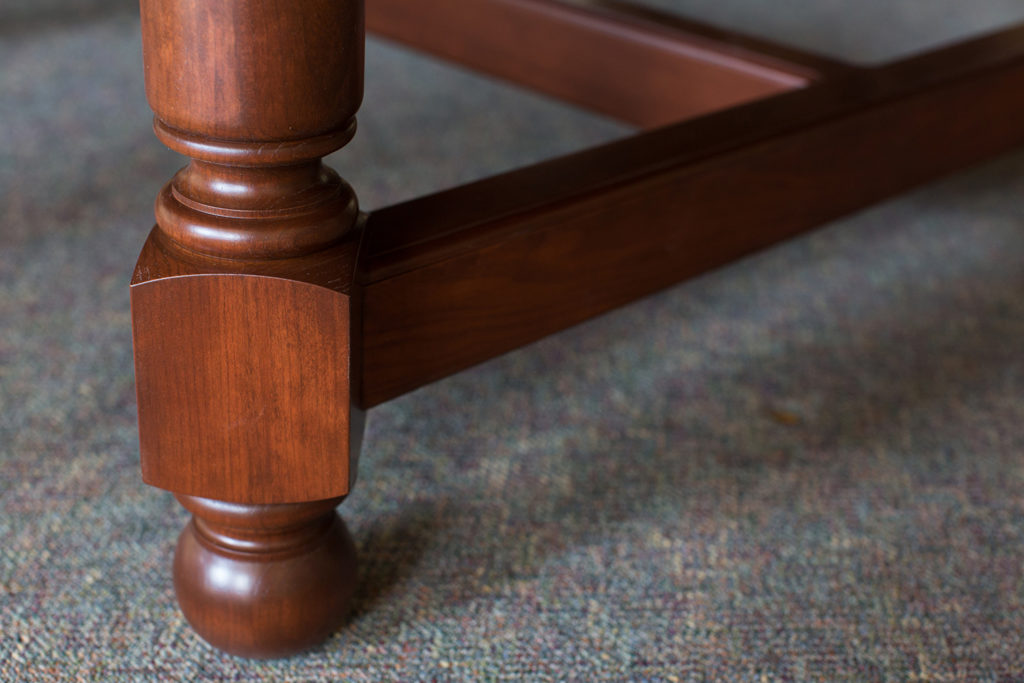
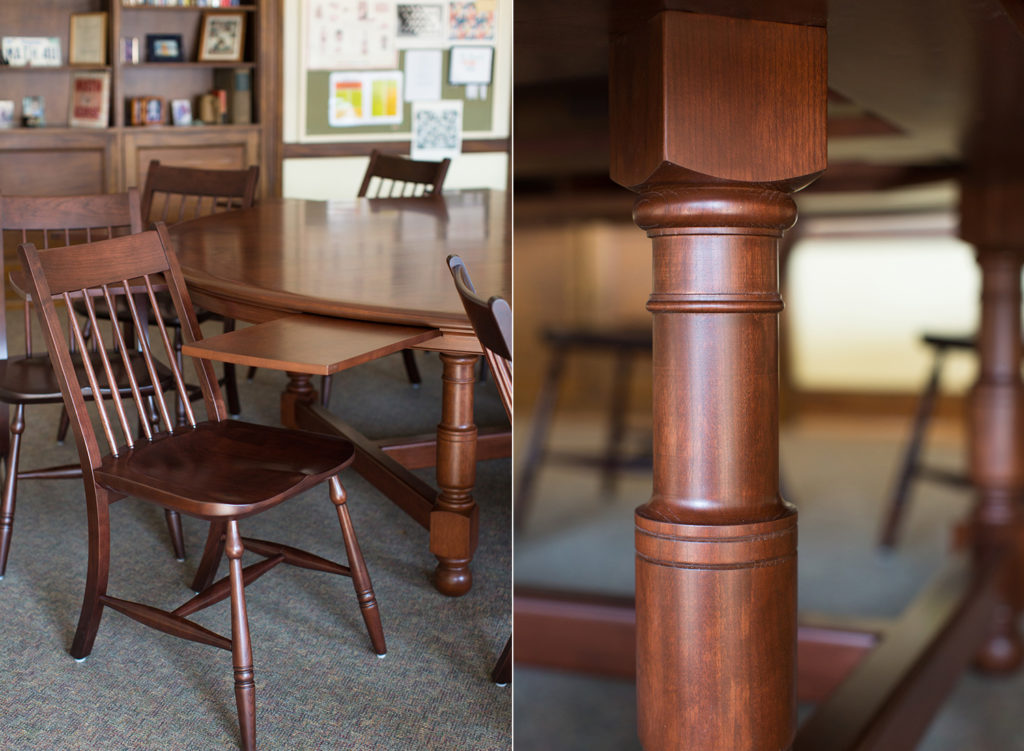
Seating Options
Huston & Company partners with Eustis Chair to provide custom Harkness Chairs designed to accommodate the unique elements of the tables.
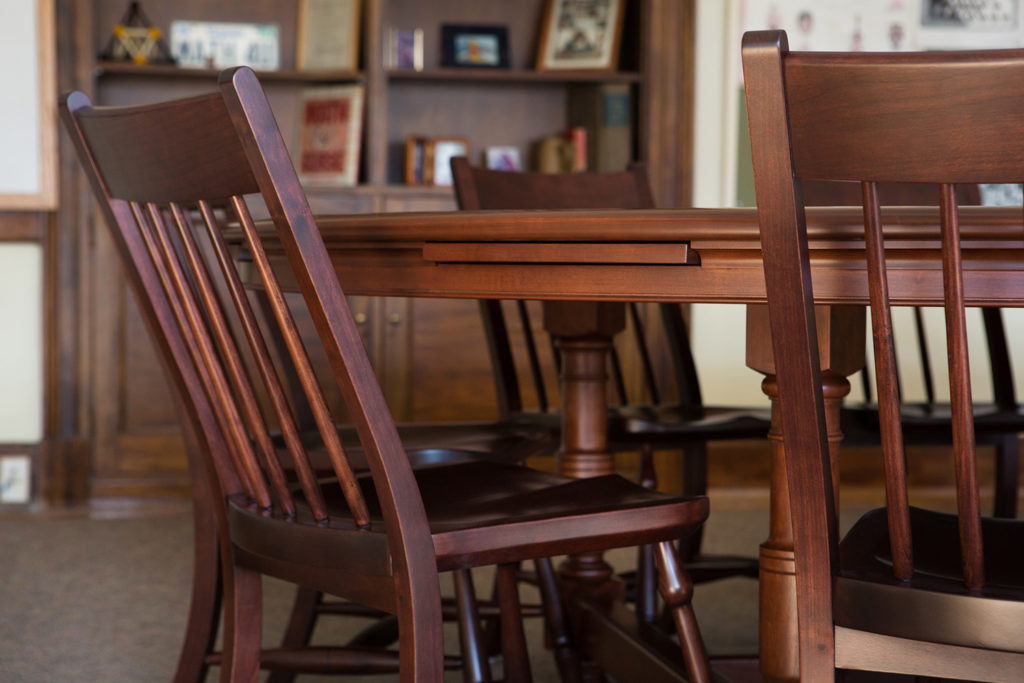
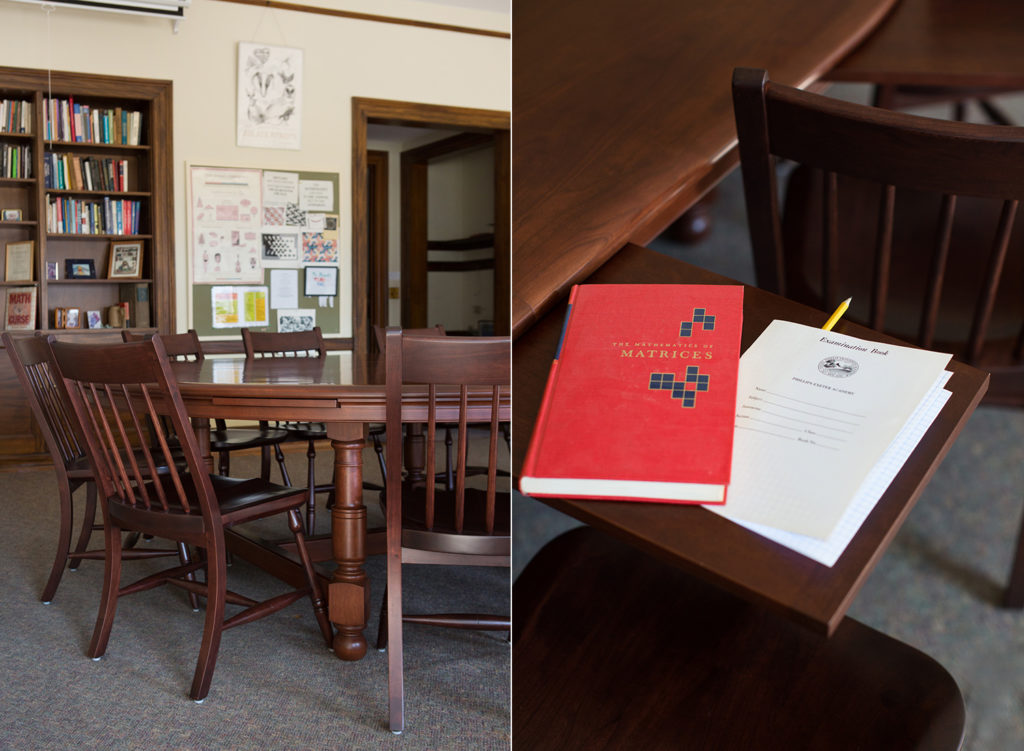
Similar to the way in which we approach the design and construction of all the furniture we create for academic institutions, the process of building a Harkness Table™ is a collaborative one between Huston & Company and the school.
Please email us with any questions you might have. We look forward to beginning a dialogue with you about our process for creating the signature, patented Harkness Table™.
